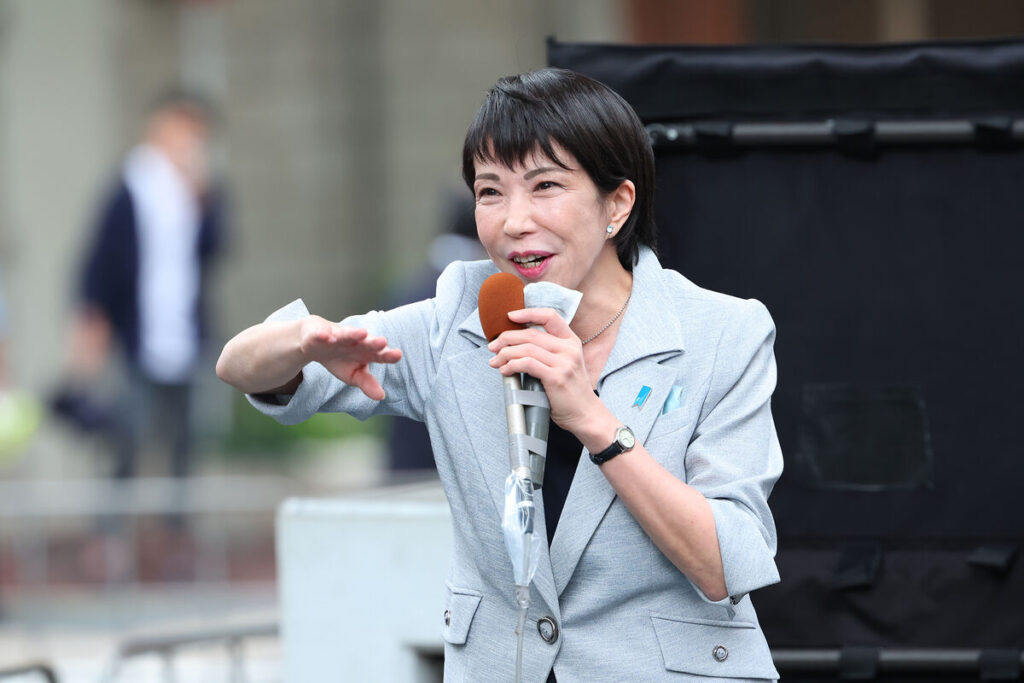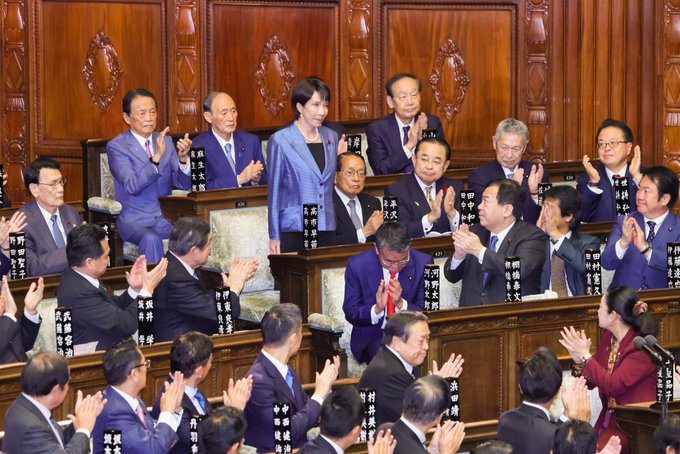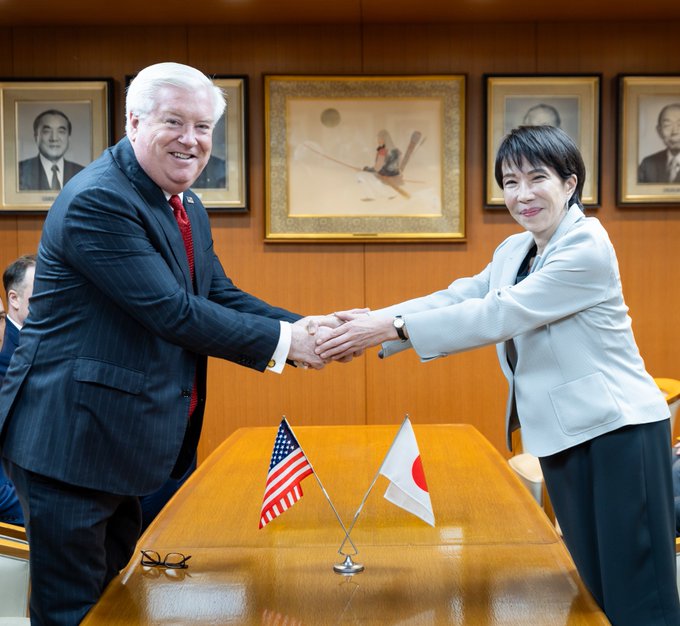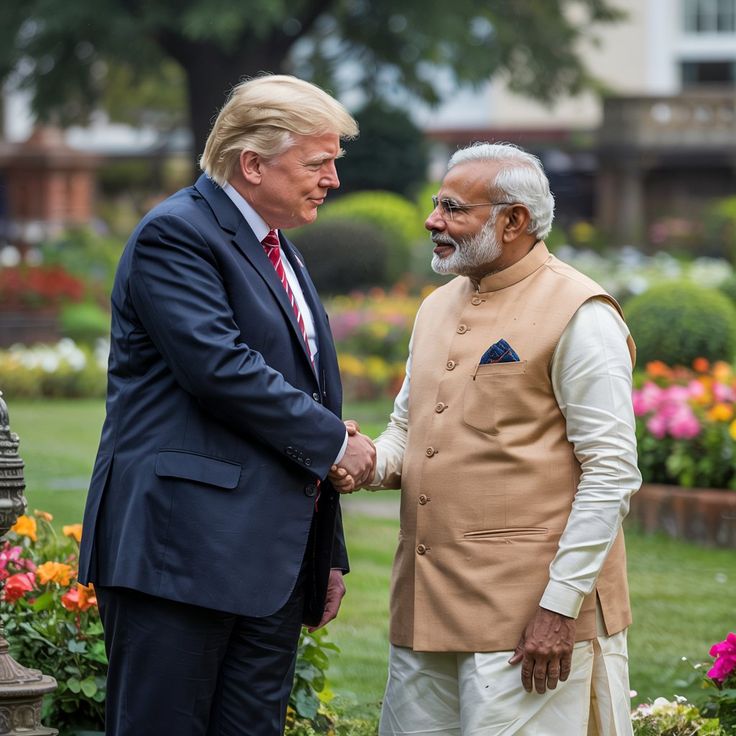Japan has turned a decisive page in its political history. In a landmark parliamentary vote, Sanae Takaichi, leader of the ruling Liberal Democratic Party (LDP), has been elected as the 104th Prime Minister of Japan, becoming the first woman ever to hold the nation’s highest office.
Her election marks a moment of triumph for gender representation in Japanese politics, but also opens a chapter filled with economic challenges, shifting alliances, and ideological debate.
A Historic Moment for Japan
For a country long viewed as a bastion of traditionalism, Takaichi’s victory signals both continuity and change. She captured 237 votes in Japan’s Lower House, securing the parliamentary majority required to lead the government. The vote followed weeks of intense backroom negotiations, driven by the fallout from the resignation of former Prime Minister Shigeru Ishiba, whose coalition crumbled after electoral setbacks.
Takaichi’s ascension was formalized in the Upper House later that day, officially confirming her as Japan’s new leader. Lawmakers greeted the decision with a mix of applause, tension, and reflection a scene that many described as historic in the nation’s modern parliamentary history.
The Road to Power
The journey to this point has been anything but straightforward. When Shigeru Ishiba stepped down amid coalition turmoil, Japan faced political uncertainty. Takaichi, known for her steadfast leadership style and unwavering conservative ideology, emerged as the consensus choice to stabilize the party.
But her path to the premiership was secured only after a last-minute alliance with the Japan Innovation Party (JIP) a right-leaning political group that shares her nationalist outlook. The alliance was forged in the final hours before the parliamentary vote, ensuring that the LDP retained the necessary majority after the Komeito Party withdrew its support.
This eleventh-hour deal reshaped the balance of power in Tokyo, signaling a realignment toward a more right-of-center coalition that could redefine Japan’s domestic and foreign policy in the years to come.
Who Is Sanae Takaichi?
Born in Nara Prefecture in 1961, Sanae Takaichi is no stranger to Japan’s political corridors. A veteran lawmaker and former Minister of Internal Affairs and Communications, she has built her reputation as a disciplined, principled leader deeply influenced by her mentor, the late Shinzo Abe.
Takaichi’s career reflects a consistent commitment to traditional Japanese values patriotism, social harmony, and national pride. Her conservative worldview has earned her both staunch supporters and vocal critics. She is known to favor revisions to Japan’s pacifist constitution, a more assertive foreign policy, and the protection of traditional cultural norms.
While her rise is being celebrated as a breakthrough for women in Japanese politics, Takaichi has repeatedly distanced herself from feminist labels. Instead, she frames her leadership as a symbol of capability over identity, often stating, “I am not a female politician. I am a Japanese politician who happens to be a woman.
The Challenges Ahead
1. Reviving a Fragile Economy
Takaichi inherits an economy grappling with rising inflation, shrinking demographics, and slow wage growth. The Japanese yen remains under pressure, consumer confidence is low, and public debt levels are among the highest in the developed world.
Her administration’s first task will be to introduce a comprehensive stabilization package to combat inflation while maintaining fiscal responsibility. Economic analysts expect policies that combine short-term consumer relief with long-term productivity measures — including digital transformation, green technology investment, and innovation funding.
Takaichi has already hinted at a “Reform for Resilience” plan aimed at reducing import dependence, boosting domestic manufacturing, and fostering small-business growth.
2. Balancing Tradition and Progress
While Takaichi’s election represents progress in terms of gender representation, her policies are deeply rooted in conservative ideals. She opposes allowing married couples to keep separate surnames, supports male-only imperial succession, and emphasizes restoring what she calls “the moral strength of the Japanese family.”
Critics argue that these stances may alienate younger, urban voters who are increasingly supportive of gender equality and social reform. However, her supporters believe she reflects the majority sentiment within Japan’s aging population, which values cultural continuity and national identity.
This tension between progress and preservation is likely to shape much of her domestic agenda.
3. Coalition Management
The coalition that brought Takaichi to power is as fragile as it is strategic. The LDP’s partnership with the Japan Innovation Party ensures short-term stability but could face internal strains as legislative sessions progress.
Both parties agree on revising Japan’s defense policy but diverge on economic intervention and social spending. Managing this alliance without alienating centrist voters will be one of Takaichi’s most delicate political balancing acts.
Political insiders suggest that her cabinet appointments will serve as an early indicator of how she plans to maintain equilibrium between competing factions.
Foreign Policy Vision
Reinforcing Japan’s Security Stance
Takaichi’s victory ushers in a government more inclined toward assertive security policies. She has publicly advocated for revising Article 9 of Japan’s constitution — the clause that renounces war — arguing that the Self-Defense Forces (SDF) must have full constitutional legitimacy in light of regional threats.
Her administration is expected to strengthen military cooperation with the United States, expand cyber-defense capabilities, and increase defense spending to meet emerging challenges from North Korea’s missile tests and China’s growing presence in the East China Sea.
Managing Regional Tensions
Relations with China and South Korea are likely to remain complicated. Takaichi has been critical of China’s territorial claims and has vowed to defend Japan’s sovereignty “without compromise.” Her past visits to the controversial Yasukuni Shrine, which honors Japan’s war dead, have drawn criticism from neighboring countries.
In contrast, Takaichi has expressed a desire to build “mutual trust” with South Korea, provided historical disputes are handled “respectfully and truthfully.” Diplomats suggest her approach will combine firm national defense with careful diplomatic signalin neither confrontation nor submission.
Partnerships Beyond the Pacific
Beyond regional geopolitics, Takaichi has underscored the importance of Japan’s role in the Indo-Pacific strategy. Her government is expected to pursue stronger partnerships with India, Australia, and ASEAN nations, focusing on technology collaboration, clean energy, and maritime security.
Observers believe Japan will continue to be a central player in balancing regional power structures, especially as it works alongside democratic allies to ensure stability in the South China Sea and beyond.
Public Reaction: Hope and Hesitation
Across Japan, Takaichi’s election has been met with mixed emotions. For many citizens, her appointment is a source of national pride and a sign that Japan is capable of breaking long-standing gender barriers. Social media platforms were flooded with congratulatory messages, many calling her victory “a moment Japan will never forget.”
However, others expressed skepticism about her policies and priorities. Some question whether her conservative agenda will translate into inclusive governance. “She may be the first woman prime minister,” one Tokyo resident said, “but that doesn’t mean she will change things for women.”
Polls conducted by national broadcasters show approval ratings around 54% in her first week, signaling cautious optimism among voters.
The Legacy of Shinzo Abe and Its Continuation
Takaichi’s leadership style draws heavily from the philosophy of Shinzo Abe, who served as Japan’s longest-tenured prime minister before his assassination in 2022. Abe’s mentorship shaped her approach to governance — a blend of economic pragmatism and ideological conviction.
Observers describe Takaichi as the “torchbearer of Abe’s vision” — one who intends to complete his unfinished agenda of constitutional reform and economic resilience.
Her critics, however, warn that excessive nationalism could risk alienating international partners and destabilizing regional diplomacy.
Women in Politics: Breaking the Glass Ceiling
Japan’s political landscape has long been criticized for gender disparity. Women occupy less than 10% of seats in the national legislature, and cultural expectations often discourage female participation in politics.
Takaichi’s victory, therefore, holds immense symbolic value. It demonstrates that women can lead at the highest level, even within a conservative political framework.
International organizations and women’s advocacy groups have praised her rise as a “milestone for global gender equality,” though they emphasize that symbolism must be followed by policy.
If Takaichi can inspire more women to enter politics and public service, her tenure could leave a lasting mark beyond ideological boundaries.
Economic Blueprint: The “Three Arrows of Renewal”
In her post-election address, Takaichi outlined a new economic vision, echoing yet adapting Shinzo Abe’s famous “Abenomics” framework. Her “Three Arrows of Renewal” include:
1. Fiscal Discipline and Inflation Control:
Targeted relief for households, balanced with careful management of public debt.
2. Technological Empowerment:
Encouraging digital infrastructure and artificial intelligence adoption to modernize industries.
3. National Resilience:
Strengthening supply chains, promoting energy independence, and supporting rural revitalization.
Her strategy aims to position Japan as a leader in sustainable innovation while safeguarding its cultural and economic sovereignty.
The Road Forward
Sanae Takaichi’s first 100 days in office will set the tone for her leadership. She must form a stable cabinet, manage her coalition allies, and reassure both markets and citizens that her government can deliver results.
Her early policy initiatives particularly on inflation, defense, and social welfare will determine whether she can unify a politically divided Japan.
At the same time, she faces the daunting task of balancing her conservative ideology with the expectations of a society increasingly calling for reform and inclusivity.
A Defining Moment in Japanese Democracy
Japan’s election of its first female prime minister is a moment of global resonance. It showcases the nation’s capacity for transformation within continuity — a society that respects its traditions yet adapts to the demands of a modern world.
Whether Sanae Takaichi’s leadership will usher in a new era of progress or deepen existing divides remains to be seen. But one fact is indisputable: she has already made history.
As Japan watches its first female leader step into office, the world, too, watches curious, hopeful, and alert to see how this historic experiment in leadership unfolds.
Final Word:
Sanae Takaichi’s rise is not just a political victory it’s a test of Japan’s evolving identity. Between tradition and transformation, she stands at the crossroads of history. Whether she redefines Japan’s destiny or reinforces its roots, one thing is certain: the world will remember this as the day Japan broke one of its final political barriers.
Related News: Read More





